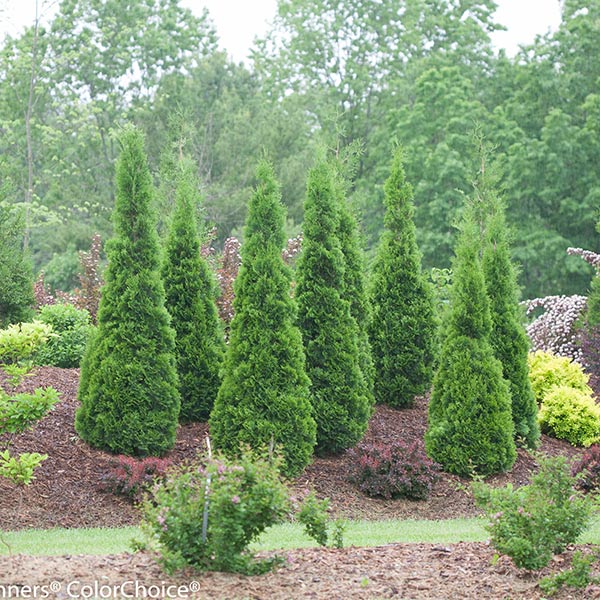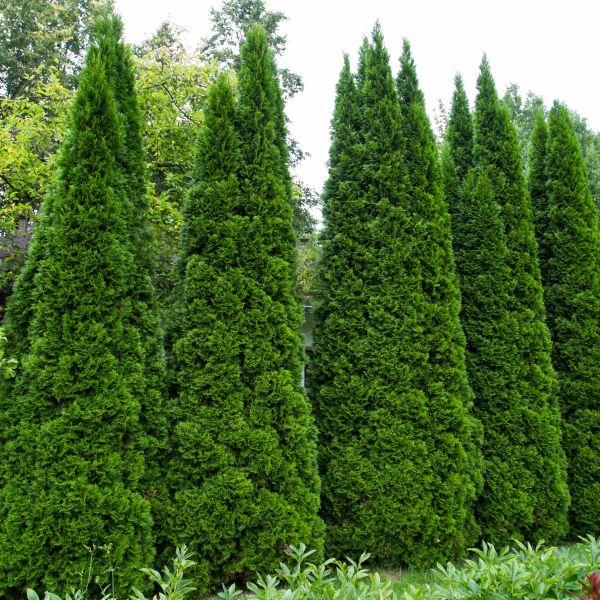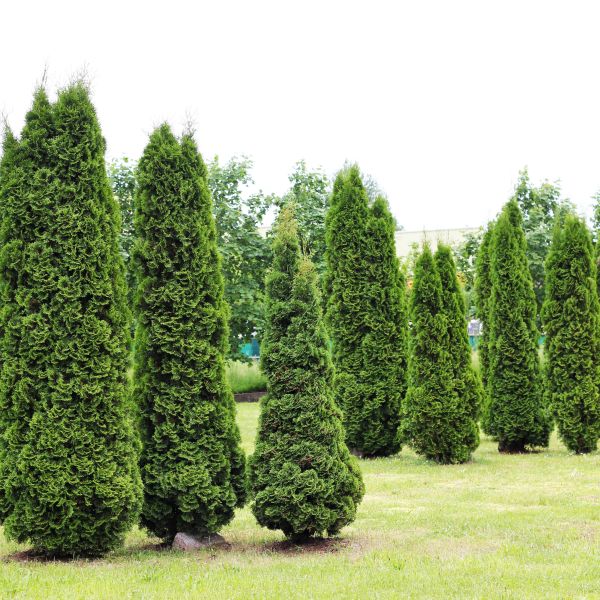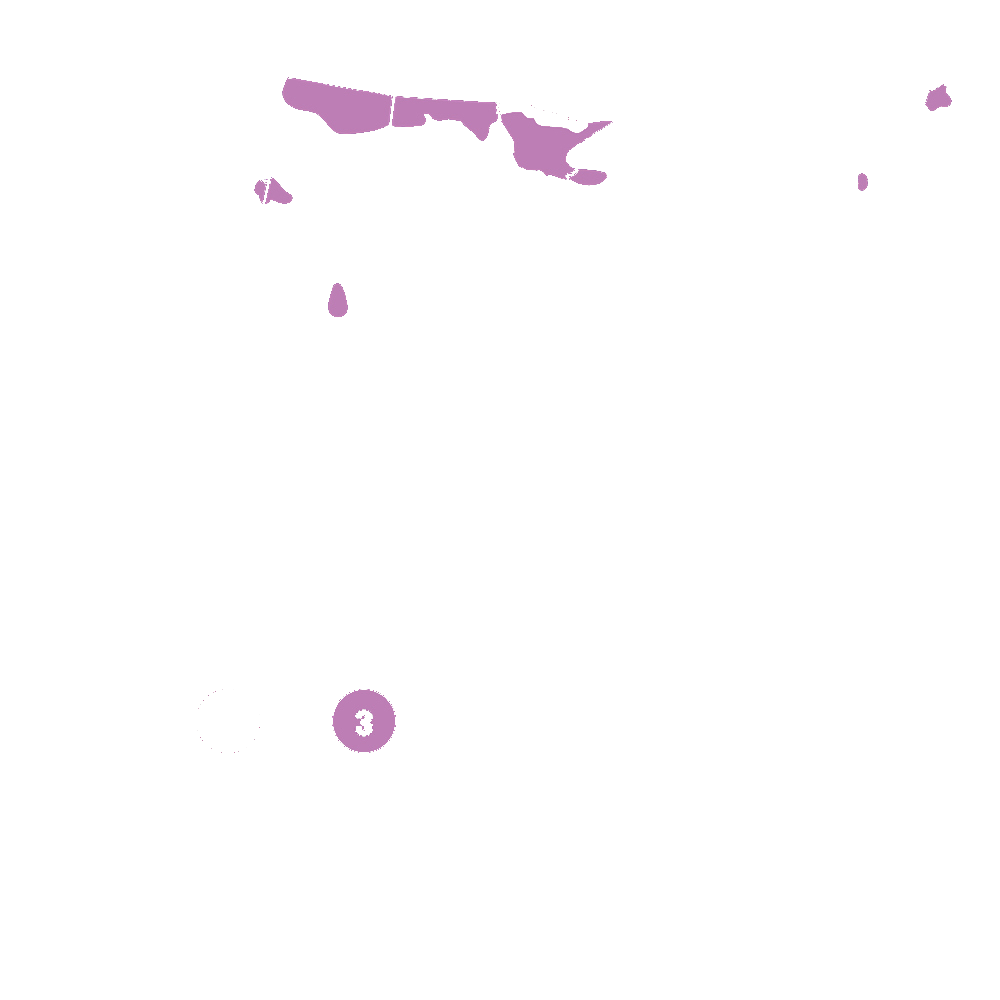


North Pole Arborvitae
Thuja occidentalis 'Art Boe'
87 reviews
North Pole Arborvitae
Thuja occidentalis 'Art Boe'
87 reviews
- 2.5 Gallon 2-3 Feet
- Quart Container
- 1 Gallon
- 2.5 Gallon 1-2 Feet
We are sorry, product is currently out of stock due to seasonal availability. Please check the "Related plants available in your area" section below
Not just beautiful - intentionally selected by ShrubHub's 3D landscape design team to fit real-world spaces and maximize yard potential.
Why North Pole Arborvitae?
The North Pole Arborvitae (Thuja occidentalis 'Art Boe') is a compact evergreen shrub that is known for its narrow columnar growth habit. It has dark-green foliage that stays vibrant throughout the year, making it a perfect choice for landscape privacy screens or foundation planting. It's also relatively low-maintenance, making it a popular tree among garden enthusiasts. The North Pole Arborvitae has a hardiness zone of 3-7 and can grow up to 12 feet tall and 2-3 feet wide.
Sunlight
North Pole Arborvitae requires full sun exposure for optimal growth and development.
Watering
North Pole Arborvitae requires regular watering, especially during dry periods. It prefers moist, well-drained soil and benefits from deep watering to encourage deep root growth. Adequate water supply is crucial for the health and survival of this evergree
Fertilizing
The fertilizer requirement for North Pole arborvitae is generally low, as it prefers well-drained soil with moderate fertility. A balanced slow-release fertilizer can be applied during the spring season to promote healthy growth.
North Pole arborvitae (eastern arborvitae) is a small to medium-sized evergreen tree that grows up to 4 to 6 feet tall and 3 to 5 feet wide, with an average growth rate between 12 to 18 inches per year.
Thanks to its narrow upright columnar habit and emerald green color, thuja occidentalis ‘art boe’ makes for a vertical bold accent plant or a focal point for compact gardens. Its year-round interest and lush greenery create a sense of abundance in your small backyard, providing you with a verdant oasis where you get to reconnect with nature.
Even if you own a huge yard, planting a north pole arborvitae is a great landscape design idea as it doubles as a natural green screen. It not only goes well with mixed borders, offers you complete privacy, and blocks cold winter wind but also adorns your space with dark green foliage. Before you know it, feelings of serenity and freshness will take over your space.
Its hardy structure, narrow form, vertical year-round interest, and sprays of feathery dark green foliage all create a sense of consistency and natural flow in your garden.
Most importantly, to create a private getaway where the north pole arborvitae is the star of the show, you need to learn what makes the North Pole Arborvitae Thuja occidentalis flourish and what maintains its unique charm. This low-maintenance evergreen tree performs best in full sun yet tolerates partial shade, prefers moist, well-drained soil, appreciates regular watering during its first growing season, and resists cold weather.
Spark up your home design with the North Pole arborvitae tree. Order yours today!
Plant Information:
| Botanical Name: | Thuja occidentalis 'Art Boe' |
| USDA Zones: | 3 - 7 |
| Water: | Moderate |
| Exposure: | Full Sun |
| Soil Needs: | Widely Adaptable |
| Mature Height: | 10 - 15 feet |
| Mature Spread: | 4 - 5 feet |






Pollination Info
Pollination of North Pole Arborvitae (Thuja occidentalis 'Art Boe')
North Pole Arborvitae, also known as Thuja occidentalis 'Art Boe', is a slow-growing evergreen tree that reaches a maximum height of 12 feet. It is commonly used for hedges, borders, and landscaping.
The North Pole Arborvitae is a dioecious plant, which means that it has separate male and female trees. This means that pollination is required for the female tree to produce cones, which contain seeds for reproduction.
The female trees produce cones that are about 1/2 inch to 3/4 inch long and are green in color. The male trees produce small, yellowish-brown catkins that hang from the branches.
In order for pollination to occur, the pollen from the male trees needs to reach the female trees. This can occur through wind pollination or through the help of insects, such as bees.
It is important to note that if you are planting North Pole Arborvitae as a hedgerow, you will need to plant both male and female trees in order to ensure pollination and the production of cones.
Overall, pollination is an important process for the North Pole Arborvitae to reproduce and continue to grow and thrive.
FAQ
North Pole Arborvitae (Thuja occidentalis 'Art Boe') FAQ
What is North Pole Arborvitae?
North Pole Arborvitae (Thuja occidentalis 'Art Boe') is an evergreen coniferous shrub that can grow up to 15 feet tall and 3 to 4 feet wide. It is a dense, narrow tree that is commonly used for hedges and screens, as well as for ornamental purposes in small landscapes. It is named for its tall, spire-like growth habit, which is reminiscent of a North Pole.
What are the features and benefits of North Pole Arborvitae?
North Pole Arborvitae has several features and benefits, including:
- Evergreen foliage that provides year-round interest and privacy
- Dense growth habit that makes it ideal for use as a hedge or screen
- Tall and narrow growth habit that makes it perfect for small landscapes
- Low maintenance and disease-resistant
- Tolerant of a wide range of soil and light conditions
How do I plant North Pole Arborvitae?
Plant North Pole Arborvitae in well-drained soil in a sunny or partially shaded area. Dig a hole that is slightly deeper and wider than the root ball of the plant. Gently loosen the roots and place the plant in the hole, making sure that it is level with the surrounding soil. Backfill the hole with soil and water thoroughly.
How often should I water North Pole Arborvitae?
Water North Pole Arborvitae deeply and regularly, especially during its first year until it is established. After that, water it regularly during dry spells and when the soil is dry to the touch. Avoid overwatering, as this can lead to root rot.
How do I prune North Pole Arborvitae?
Prune North Pole Arborvitae as needed to maintain its shape and size, and to remove any dead or damaged branches. You can prune it in the early spring or fall, but avoid pruning it in the heat of summer. Use sharp, clean pruning tools to make clean cuts, and avoid cutting into the main stem of the plant.
How do I fertilize North Pole Arborvitae?
Fertilize North Pole Arborvitae in the early spring with a slow-release, balanced fertilizer. Follow the manufacturer's instructions for application rates and methods. Avoid fertilizing it in the fall, as this can lead to winter damage.
Is North Pole Arborvitae deer resistant?
Yes, North Pole Arborvitae is deer resistant. Its dense foliage and strong scent make it unappealing to deer.
What are common problems and diseases of North Pole Arborvitae?
North Pole Arborvitae is generally disease-resistant, but it can be susceptible to a few problems:
- Bagworms: These caterpillars can defoliate arborvitae trees if left untreated. Remove bagworms by hand or use insecticides to control them.
- Spider mites: These pests can cause discoloration and damage to the foliage. Treat them with insecticidal soap or horticultural oil.
Planting & Care
Planting:
1. Choose a location with full sun to partial shade.
2. Prepare the soil by digging a hole twice the width of the root ball and slightly shallower than the height of the root ball.
3. Mix in organic matter such as compost or peat moss with the soil removed from the hole.
4. Place the plant in the hole, ensuring that the top of the root ball is level with the soil surface.
5. Backfill with the soil and organic matter mixture, firming the soil with your hands as you go.
6. Water thoroughly to settle the soil around the roots.
7. Add a layer of mulch around the base of the plant to help retain soil moisture and prevent weed growth.
Care:
1. Water regularly during the first growing season to establish a strong root system. After that, water during periods of drought or when the soil feels dry to the touch.
2. Fertilize in early spring with a slow-release, balanced fertilizer formulated for evergreen trees.
3. Prune in early spring before new growth appears to maintain the desired shape and size. Remove any dead or diseased branches as needed.
4. Protect from winter winds and sunscald by wrapping the plant with burlap or using a screen during the winter months.
5. Monitor for pests such as spider mites, bagworms, and aphids. Treat with an appropriate insecticide if necessary.
Check Out These Verified Customer Reviews:
Customer Reviews
4.6 out of 5 based on 87 reviews
Thank you! Your review has been submitted.
I love my North Pole Arborvitae trees! They are thriving in my yard and have added beauty to my landscaping.
Thriving in my garden
The North Pole Arborvitae trees are a stunning addition to my garden. The website was user-friendly and the shipping was fast.
Item has been added to your cart.


